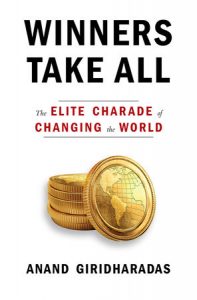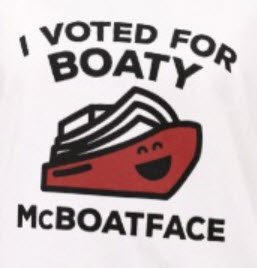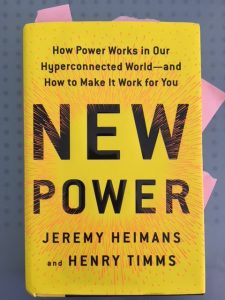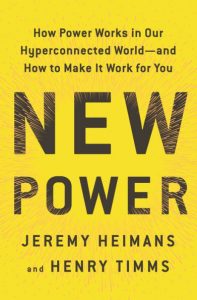 This is going to be a fairly short blog post today, because my intent is to point you elsewhere. I’d like to recommend that you go to CEP president Phil Buchanan’s recent article called “Putting Critiques in Perspective in Pursuit of More Effective Philanthropy” on the Center for Effective Philanthropy’s blog last week.
This is going to be a fairly short blog post today, because my intent is to point you elsewhere. I’d like to recommend that you go to CEP president Phil Buchanan’s recent article called “Putting Critiques in Perspective in Pursuit of More Effective Philanthropy” on the Center for Effective Philanthropy’s blog last week.
As I’ve mentioned a few times here and other places, the HBG Book Club has recently read, studied and debated Winners Take All by journalist Anand Giridharadas, and The Givers by Inside Philanthropy editor David Callahan. Both books paint a provocative landscape of mega-philanthropists and their impact on the nonprofit sector and our democracy.
I imagine our book club will soon be reading Stanford professor and political scientist Rob Reich’s book Just Giving: Why Philanthropy Is Failing Democracy and How It Can Do Better and Buchanan’s own forthcoming book Giving Done Right: Effective Philanthropy and Making Every Dollar Count because they also contribute to this important philosophical discussion happening right now in our sector.
These authors’ narratives and opinions all weave together like differently-colored yarn in one fabric, but they also diverge from each other along the fringes. But given the seeming penchant lately for people with differing views to shout and vilify rather than calmly and intelligently discuss and debate, I was pleasantly surprised, encouraged, and educated by reading Buchanan’s blog post in response to the positions of the authors of those books, and the comments/rebuttals/expansions by some of those very authors as well as other experts in the field in reply.
I encourage you to read Buchanan’s article and to contribute your insights either on his blog post or here. I’d really love to hear what you think.









